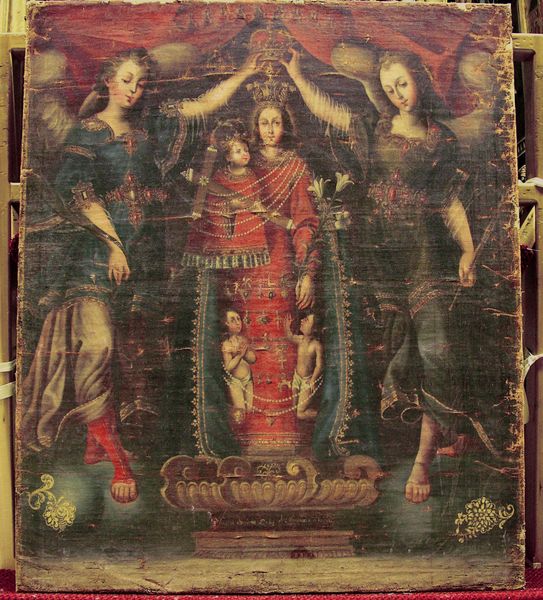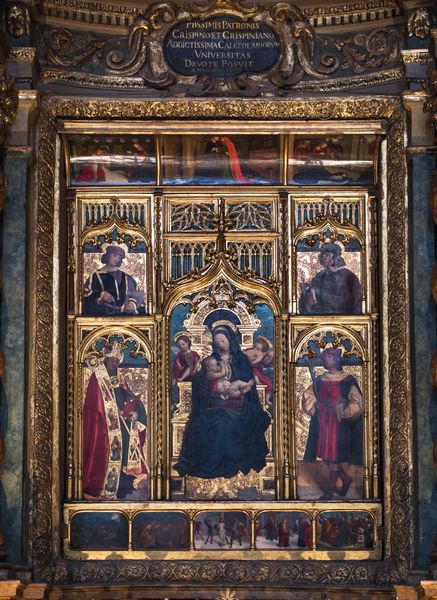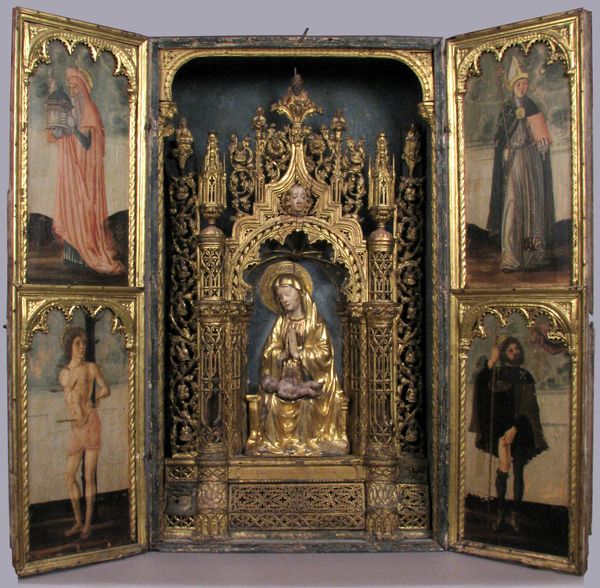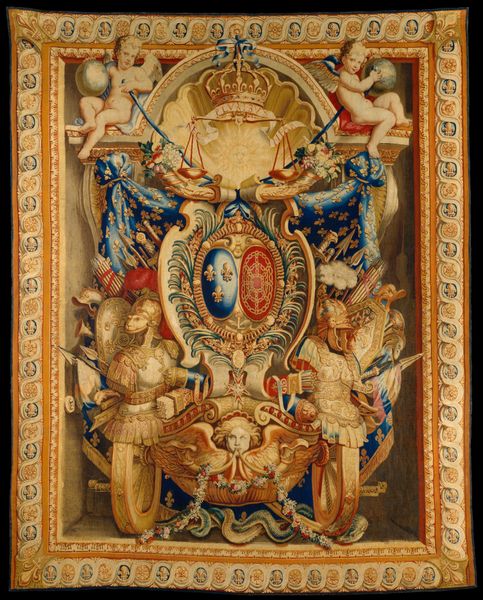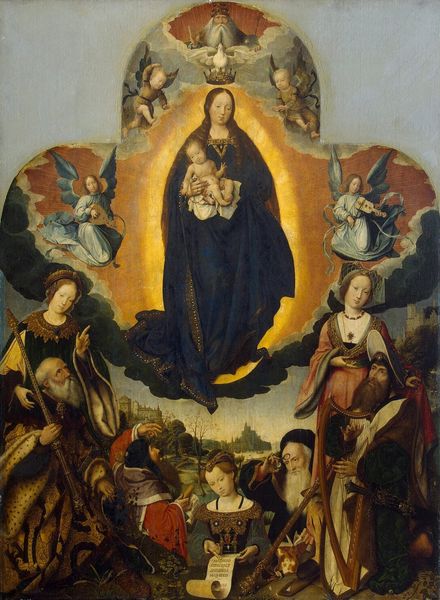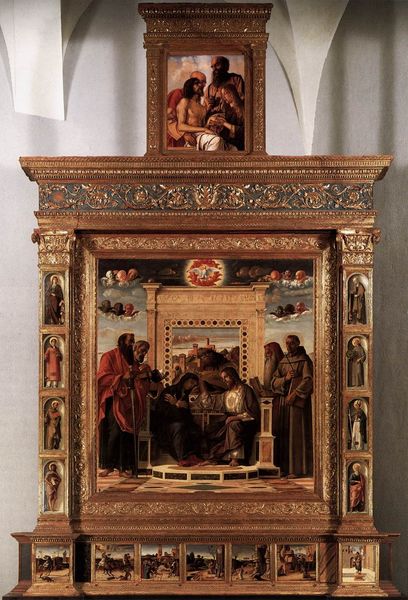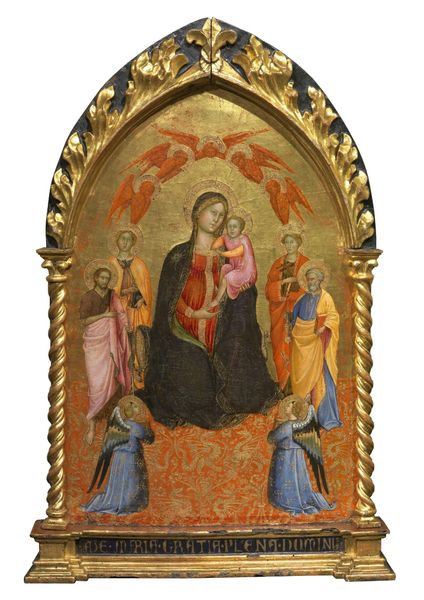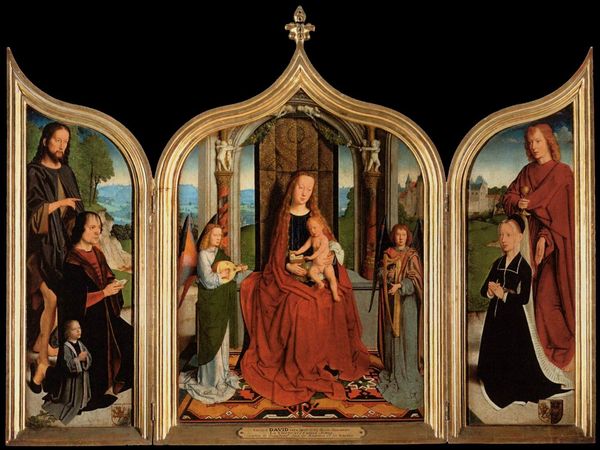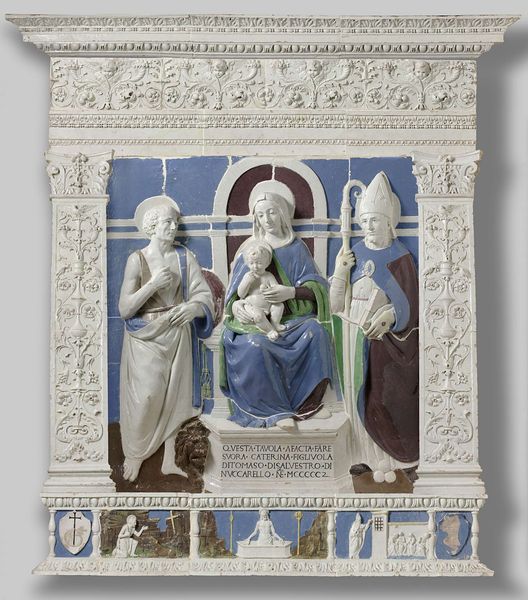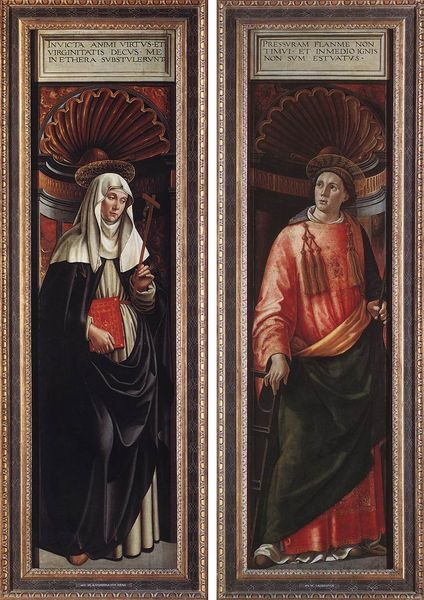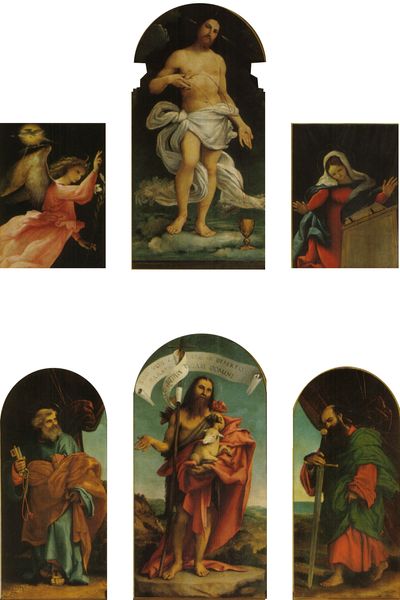
Madonna and Child, St. Christopher and St. George 1494
0:00
0:00
ambrogiobergognone
National Museum, Poznań, Poland
tempera, painting, oil-paint
#
portrait
#
narrative-art
#
tempera
#
painting
#
oil-paint
#
sculpture
#
strong focal point
#
figuration
#
oil painting
#
framed image
#
history-painting
#
italian-renaissance
#
early-renaissance
Copyright: Public domain
Curator: Ambrogio Bergognone created this triptych, “Madonna and Child, St. Christopher and St. George,” around 1494, utilizing tempera and oil on panel. It resides at the National Museum in Poznań, Poland. It strikes me immediately with its visual divisions—almost as if separate narratives are vying for space. What do you think? Editor: It does have a somewhat disjointed feel, doesn’t it? Yet the unifying element seems to be this... awkward representation of male strength. St. Christopher looks almost pained to be carrying a small child and St. George seems strangely passive in his armor. It challenges stereotypical heroic portrayals. Is this artist often presenting an anti-establishment view through their work? Curator: Bergognone was painting during a pivotal period for the Renaissance in Italy. Milan, where he spent much of his career, was experiencing shifting political allegiances. He navigated the intersection of art production and political messaging quite deliberately. Take note of how he's depicting male and female virtue by subverting the expected roles, for instance, while representing traditional Christian figures. This composition offers space to question established religious ideas of power and sacrifice. Editor: Considering that, the contrast is amplified even further by the Madonna figure at the heart of the panel. She appears passive and resigned in manner as opposed to joyful or divine. And how might that challenge notions about the maternal ideal, especially given how central that Madonna image was to the church. How would this have been viewed at the time? Curator: Her role as a vessel, as someone who facilitates life, is made even more crucial to a culture still in flux because the idea of ‘the body’ has acquired importance. Bergognone isn’t outright rejecting sacred traditions, he’s expanding on them to make viewers think critically about agency, divinity, and social expectations during times of uncertainty. Editor: Thank you. Your comments gave me insight into why it provoked such a complex reaction for me. It’s clear this panel represents not simply one interpretation of established belief, but an exploration of its place in society.
Comments
No comments
Be the first to comment and join the conversation on the ultimate creative platform.
